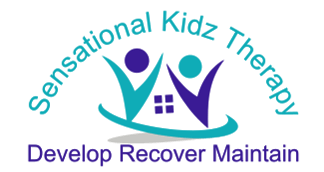It’s every parent’s dream to set their child up for long-term success. Who hasn’t seen a doctor’s ridiculous scrawl and thought to themselves, “Oh, my gosh, who taught this person how to write?!” Handwriting says a lot about an individual, and the absolute best time to get started teaching penmanship is during the early years.
Developing good handwriting takes a lot of time, and while it starts at home, it definitely is a process that will continue on through the primary school years and even beyond. However, there are some children who will have even more difficult than others. There is a long list of reasons children may have difficulty with handwriting, and working with a physical therapist is a great way to build the strength and routine necessary to develop strong penmanship skills. Whether there is a need to improve hand-eye coordination, work through potential developmental issues like ADHD, or build muscle development, working with a physical therapist is a great strategy to get you started off on the right foot.
Ways to Improve Handwriting With Your Child
Good handwriting is not something that will happen overnight. The first time any child picks up a pen, their handwriting is going to be full of mistakes. In time, they will learn how to write the letters and will want to start forming words and sentences, and this is when it is time to start really focusing on ways to teach proper penmanship. As time goes on, if there are still fundamental issues with the formation of letters, numbers, and even the ability to write in a straight line, then it may be time to develop strategies to improve handwriting before they take those poor habits into adulthood. As with anything else in life, when it comes to improving handwriting, practice makes perfect.
Here are Three Ways You Can Practice Better Handwriting at Home With Your Child:
- Do plenty of drills with your child by having them trace overprinted letters. These sorts of drills are what many primary school teachers use to improve handwriting in students, and it can help train muscle memory for children, so they can practice better handwriting on their own as time goes on.
- Sometimes, the issue with handwriting isn’t purely muscular but instead is related to some additional forms of difficulties like attention deficit or even dysgraphia. When this is the case, working with a physical therapist can definitely help. At home, additional practice techniques can be useful, such as having the child state out loud what they plan to write as they write it. Even saying the letter or word as they write can help improve focus, and this sometimes can improve handwriting.
- Another great strategy to use when you are working with your child is to model positive handwriting techniques. Demonstrate to your child how to hold a pen and how to position the paper. Demonstrate the way you are focusing on your handwriting, and share tips with your child. Sometimes, modeling how you are able to focus on your writing can help improve your child’s ability to focus themselves.
Overcoming poor handwriting isn’t always the easiest problem to fix, so being patient with your child is important. In addition to working with your child’s teacher or a private tutor, you may also want to consider reaching out to a physical therapist for support with this process.
Contact us for more information about ways to improve handwriting in children who need a bit of extra support and how physical therapy may help.
Sensational Kidz Therapy has two convenient locations serving the areas of Fredericksburg & Woodbridge, VA.







Leave a Reply